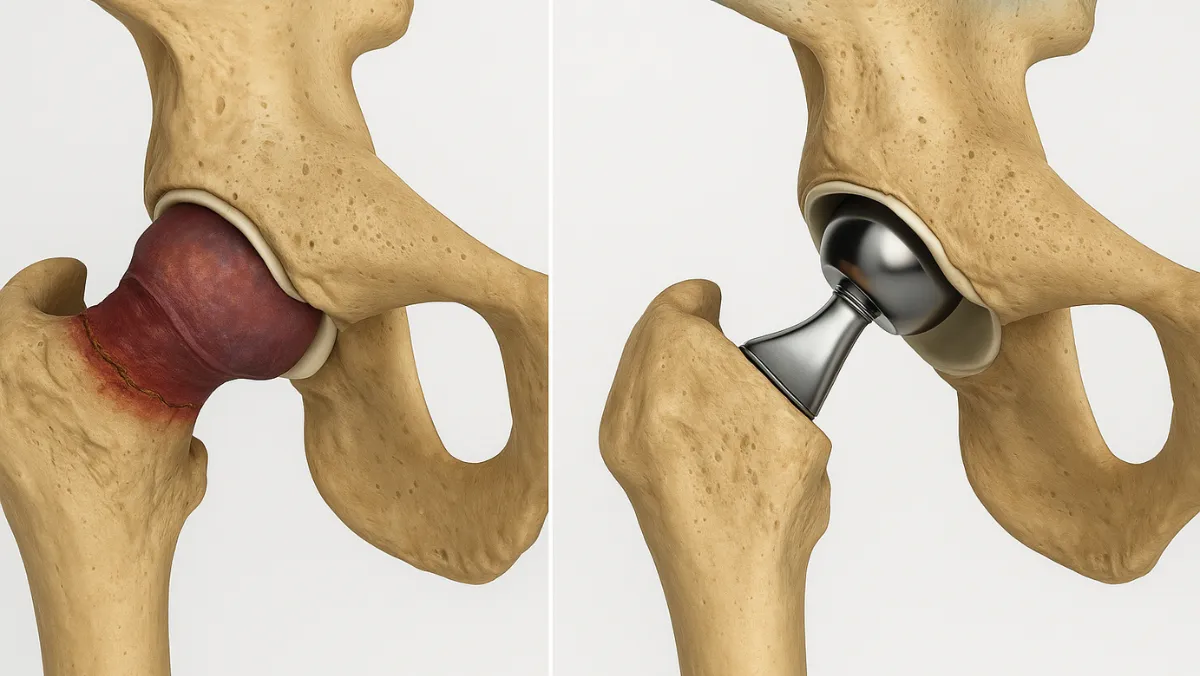
Safety Rate
Hip fractures, especially those involving the femoral neck or head, are among the most common injuries in older adults and can severely affect mobility, independence, and quality of life. When the damage is too severe to repair, one of the most effective surgical treatments is Partial Hip Replacement, also known as hemiarthroplasty. This procedure focuses on replacing only the damaged ball portion of the hip joint while preserving the natural socket (acetabulum). It offers a reliable way to relieve pain, restore function, and promote faster recovery compared to more extensive procedures.
Partial hip replacement involves replacing the femoral head—the ball part of the hip joint—with a prosthetic implant, while leaving the natural socket intact. This approach is different from total hip replacement, where both the ball and socket are replaced. By targeting only the damaged portion, hemiarthroplasty minimizes surgical complexity and helps patients regain mobility more quickly.
This procedure is most often recommended for:
Patients who may not tolerate longer anaesthesia , more complex surgeries due to medical conditions.
Partial hip replacement is generally performed under general or regional anesthesia. The procedure involves:
Recovery after partial hip replacement is typically shorter compared to total hip replacement. Most patients are encouraged to begin moving the joint within a few days of surgery to prevent stiffness and complications. Rehabilitation usually includes:
Depending on age, health, and extent of the injury, patients may return to most normal activities within a few weeks to a few months.
Partial Hip Replacement (Hemiarthroplasty) is a proven surgical option for individuals with severe hip fractures affecting the femoral head or neck. By replacing only the damaged ball of the joint and preserving the socket, it offers pain relief, quicker recovery, and restoration of mobility. While not suitable for every patient—especially those with advanced arthritis—it remains one of the most effective treatments for fracture-related hip conditions. With proper rehabilitation and care, patients can regain independence and return to a more active lifestyle.
Many patients ask, how serious is a partial hip replacement? While it is considered a major surgical procedure, it is generally less extensive than a total hip replacement. The operation involves replacing only the damaged part of the hip joint, typically the femoral head, while preserving the healthy bone. With advanced surgical techniques and proper rehabilitation, recovery is usually smooth. Most patients experience significant pain relief and improved mobility within a few months after surgery.
The key question for many patients is, what’s the difference between a hip replacement and a partial hip replacement? In a total hip replacement, both the ball and socket of the joint are replaced with artificial components. In contrast, a partial hip replacement replaces only the femoral head, leaving the socket intact. Partial replacement is usually recommended for specific fractures or localized damage, leading to a quicker recovery and less postoperative discomfort.
Yes, most patients can walk soon after a partial hip replacement, often within a day or two following surgery. Early movement is encouraged to promote blood flow, prevent stiffness, and speed up recovery. With the help of a walker or crutches initially, patients gradually regain balance and strength. Physical therapy plays a vital role in improving mobility and flexibility. Within a few weeks, many individuals can walk comfortably and resume light daily activities without significant pain.
Take the first step towards pain-free living. Book your consultation today and discover personalized treatment options tailored to your needs.